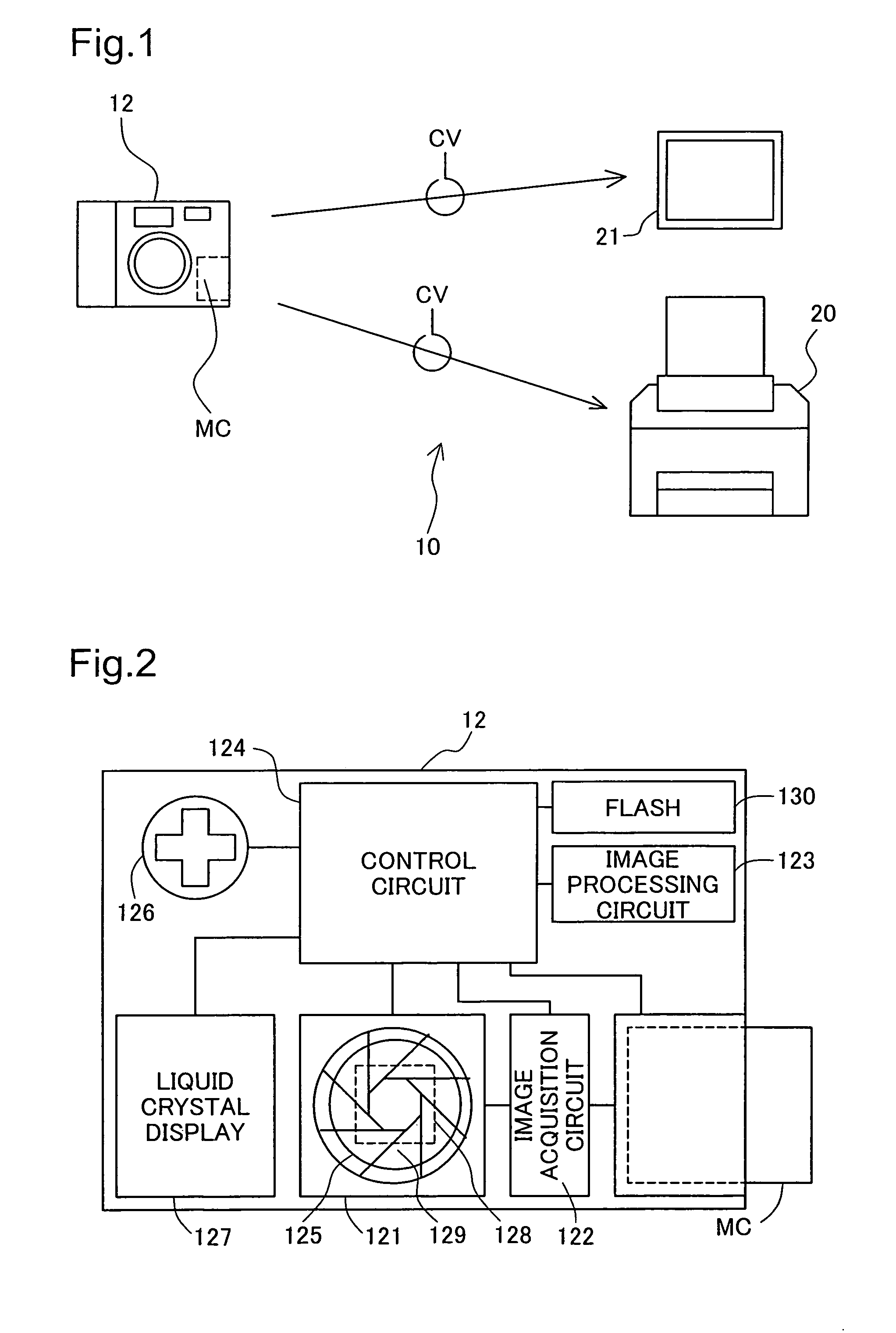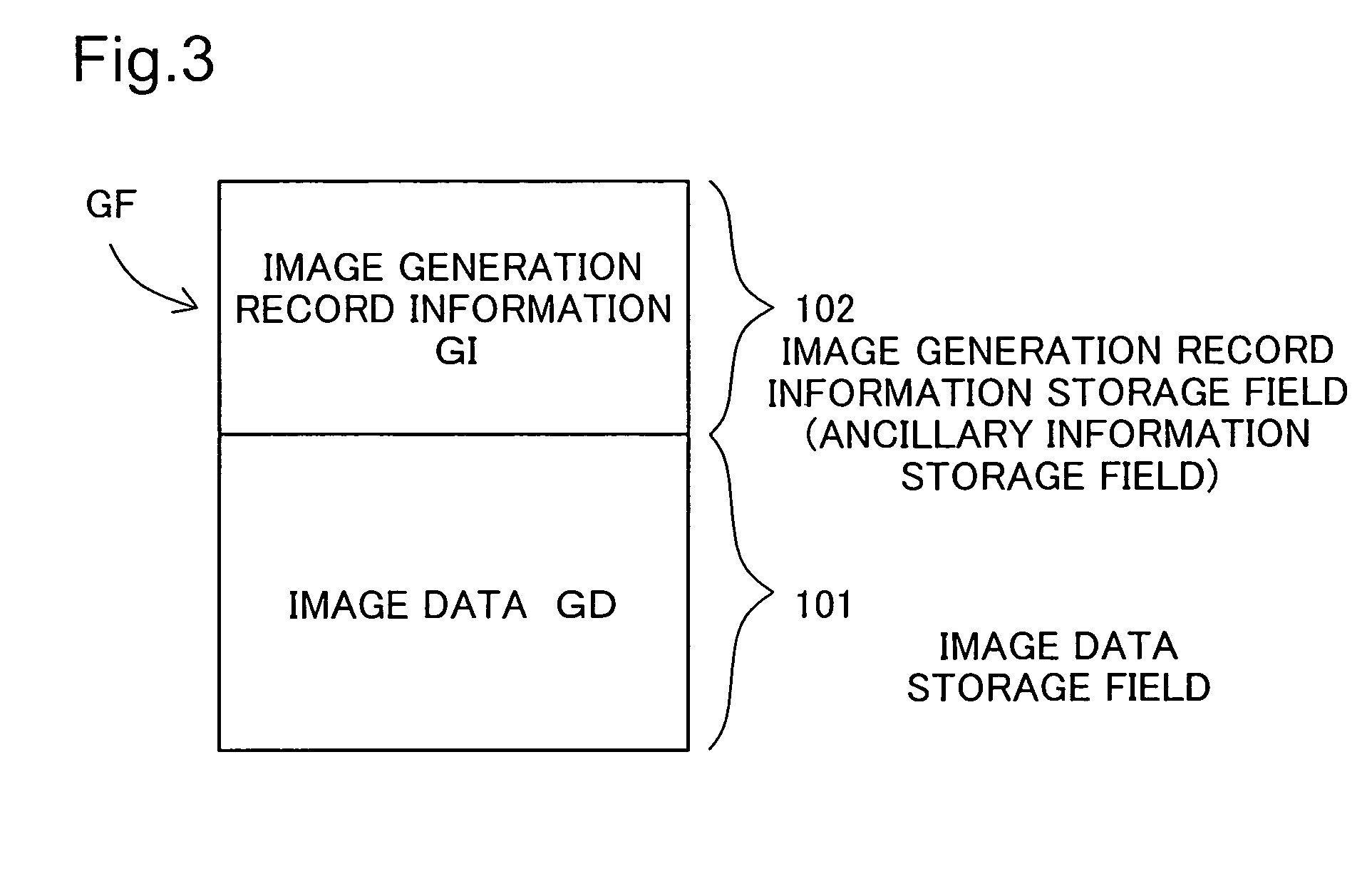Automatic adjustment of image quality according to type of light source
a technology of automatic adjustment and light source, applied in the field of image quality adjustment technique, can solve the problem of insufficient improvement of image quality, and achieve the effect of avoiding the modification of the color balance of image data according to user instruction
- Summary
- Abstract
- Description
- Claims
- Application Information
AI Technical Summary
Benefits of technology
Problems solved by technology
Method used
Image
Examples
embodiment 1
E4. Embodiment 1 of White Balance Adjustment Process According to Light Source Information
[0108]FIGS. 15(a)-15(c) illustrate a white balance adjustment process according to light source information. In the example of FIGS. 15(a)-15(c), there is shown a case in which a tungsten lamp (incandescent light) is used as the light source, with “tungsten” being set in the light source information. The difference with the standard white balance adjustment process shown in FIGS. 12(a)-12(c) is that the saturation threshold value Sth and luminance threshold value Lth for selecting color cast calculation pixel groups vary depending on hue H.
[0109]FIG. 15(b) depicts a relationship between saturation threshold value Sth and hue H. In this embodiment, the arrangement is such that saturation threshold value Sth increases as the hue H of a pixel more closely approximates orange, which is the hue of the light source. Light source hue is a value determined depending on the type of light source. Where l...
embodiment 2
E5. Embodiment 2 of White Balance Adjustment Process According to Light Source Information
[0115]FIGS. 16(a) and 16(b) illustrate a white balance adjustment process according to light source information. In the example of FIGS. 16(a) and 16(b), there is shown a case in which a tungsten lamp is used as the light source, with “tungsten” being set in the light source information. The difference with the standard white balance adjustment process shown in FIGS. 12(a)-12(c) and FIGS. 13(a)-13(b) is that the processing amount proportion k (FIG. 13(b)) is designed to vary depending on average hue Have for a color cast calculation pixel group. Hue Have represents average hue for a color cast calculation pixel group; for example, hue calculated from the red R average value Rave, green G average value Gave, or blue B average value Bave (Equation 1) may be used. In this embodiment, the same conditions as those for the standard white balance adjustment process shown in FIGS. 12(a)-12(c) are used ...
PUM
 Login to View More
Login to View More Abstract
Description
Claims
Application Information
 Login to View More
Login to View More - R&D
- Intellectual Property
- Life Sciences
- Materials
- Tech Scout
- Unparalleled Data Quality
- Higher Quality Content
- 60% Fewer Hallucinations
Browse by: Latest US Patents, China's latest patents, Technical Efficacy Thesaurus, Application Domain, Technology Topic, Popular Technical Reports.
© 2025 PatSnap. All rights reserved.Legal|Privacy policy|Modern Slavery Act Transparency Statement|Sitemap|About US| Contact US: help@patsnap.com



